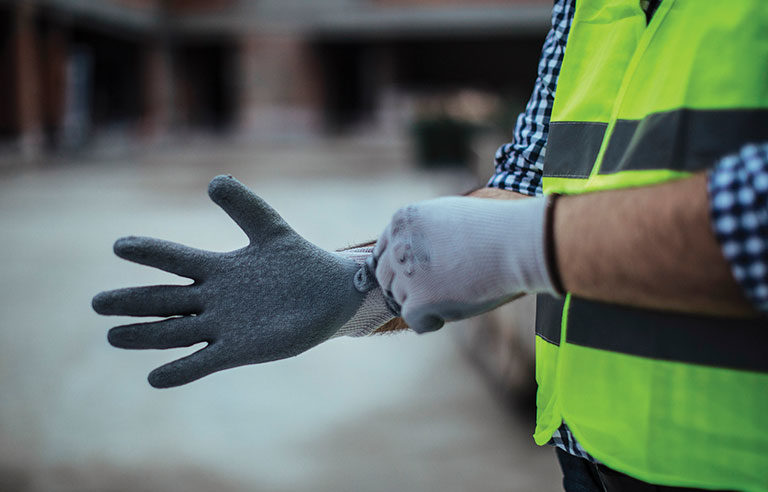Hand and arm protection
Considering the workforce can be very diverse, and the tasks performed are varied, what’s your biggest challenge in determining the appropriate gloves or arm protection (considering cut resistant factor) while maintaining comfort and dexterity for the worker?

Photo: Columbia Southern University
Responding is Julie Carter, CSP, CHST, professor in the College of Safety and Emergency Services, Columbia Southern University, Metairie, LA.
In construction, there are many tasks being performed at any time, and each task may have different hazards. Hand and arm protection for these hazards isn’t a “one-size-fits-all” choice, and the days of issuing everyone leather gloves are over.
There has been a lot of advancement in hand and arm protection: different cut resistance factors; cooling capabilities; and materials that allow for protection, comfort and dexterity. However, some workers still resist wearing this protection.
Chief complaints from workers revolve around fit, comfort and dexterity. It should be noted first that for anyone who needs protection for activities such as welding, torch cutting or brazing, the diversities aren’t as great, as the protective gear for those activities is specialized and will be fitted on a case-by-case basis. However, for the nonspecialized tasks, the previously mentioned challenges remain.
One complaint regarding arm protection is that it’s too tight or hot. Many workers exposed to arm hazards wear long sleeves. However, a long-sleeved shirt doesn’t protect them from hazards such as sharp edges from sheet metal, ductwork or reinforced steel. If the provided protective sleeves are too loose, then they can become caught on sharp edges and wires. Fortunately, there are protective offerings that are lighter in weight and provide cooling. We’re finding more success with workers wearing the newer arm protection that also cools; however, fit is still a challenge, as workers have different arm sizes.
Gloves have always been a challenge, as workers claim that they’re hot and uncomfortable and that they can’t “feel” what they’re doing. For a worker operating a hand tool, for instance, dexterity isn’t as much of an issue as it is for someone who’s working with metal stud framing or sheet metal and screws. These workers will claim that they need to feel the components and will often cut the fingers out of the gloves, which can result in injuries.
Another factor to consider is that different tasks require different protections. Gloves that provide a high cut-resistance factor may not be suitable for workers such as masons or concrete workers, as these gloves tend to be slippery when wet.
Size is another aspect to note. Not everyone has the same size hands, so the different levels of protection also must offer a proper fit. A contractor will need to provide gloves for different tasks and in varying sizes.
Contractors also must consider durability, as hand and arm protection can be costly. If the equipment wears out quickly, it must be replaced, adding to the overall cost of protecting workers.
With the varying tasks and hazard control needs for each task, it’s important to perform a thorough risk assessment before determining which protective gear to purchase. Regular evaluations are necessary to ensure the gear is still effective and being used properly.
Training workers in identifying their tasks’ hazards and why it’s important to be protected is also key to getting their buy-in, and listening to their concerns and feedback can help make better selections in protecting their hands and arms.
Editor's note: This article represents the independent views of the author and should not be considered a National Safety Council endorsement.
Post a comment to this article
Safety+Health welcomes comments that promote respectful dialogue. Please stay on topic. Comments that contain personal attacks, profanity or abusive language – or those aggressively promoting products or services – will be removed. We reserve the right to determine which comments violate our comment policy. (Anonymous comments are welcome; merely skip the “name” field in the comment box. An email address is required but will not be included with your comment.)

